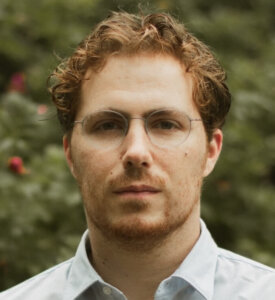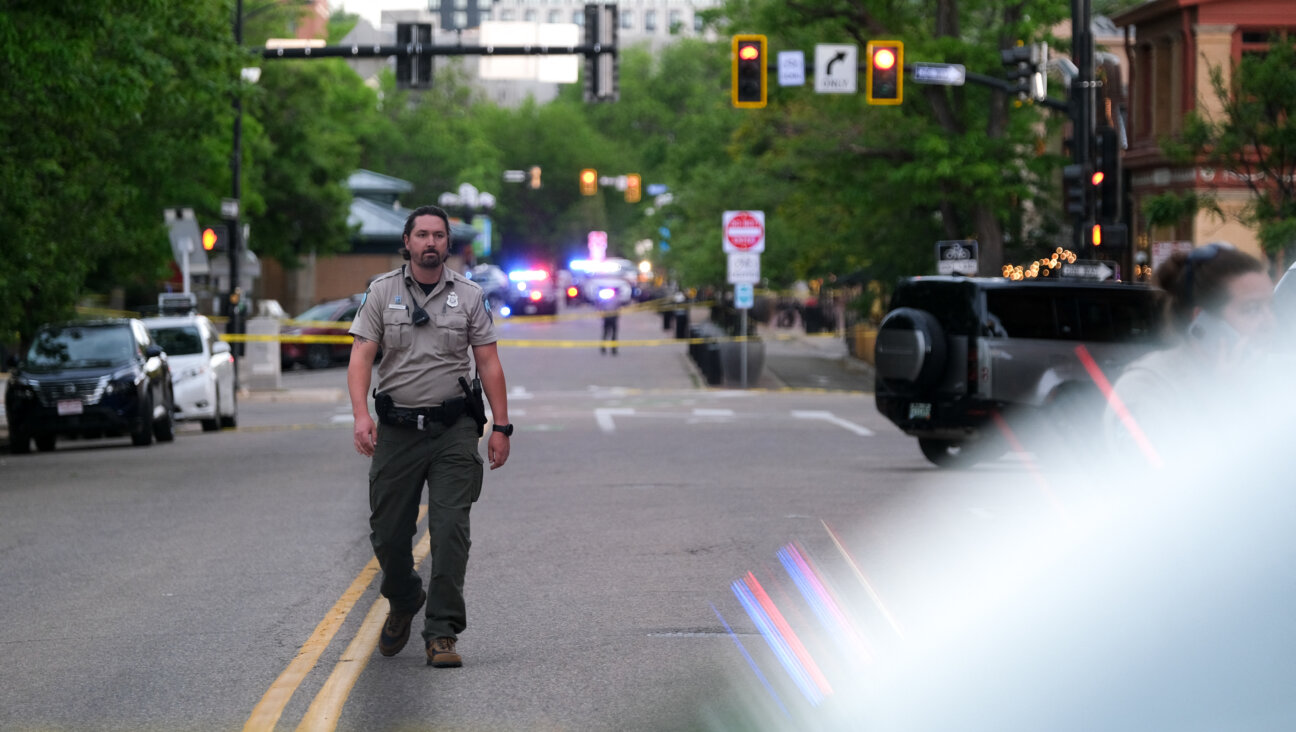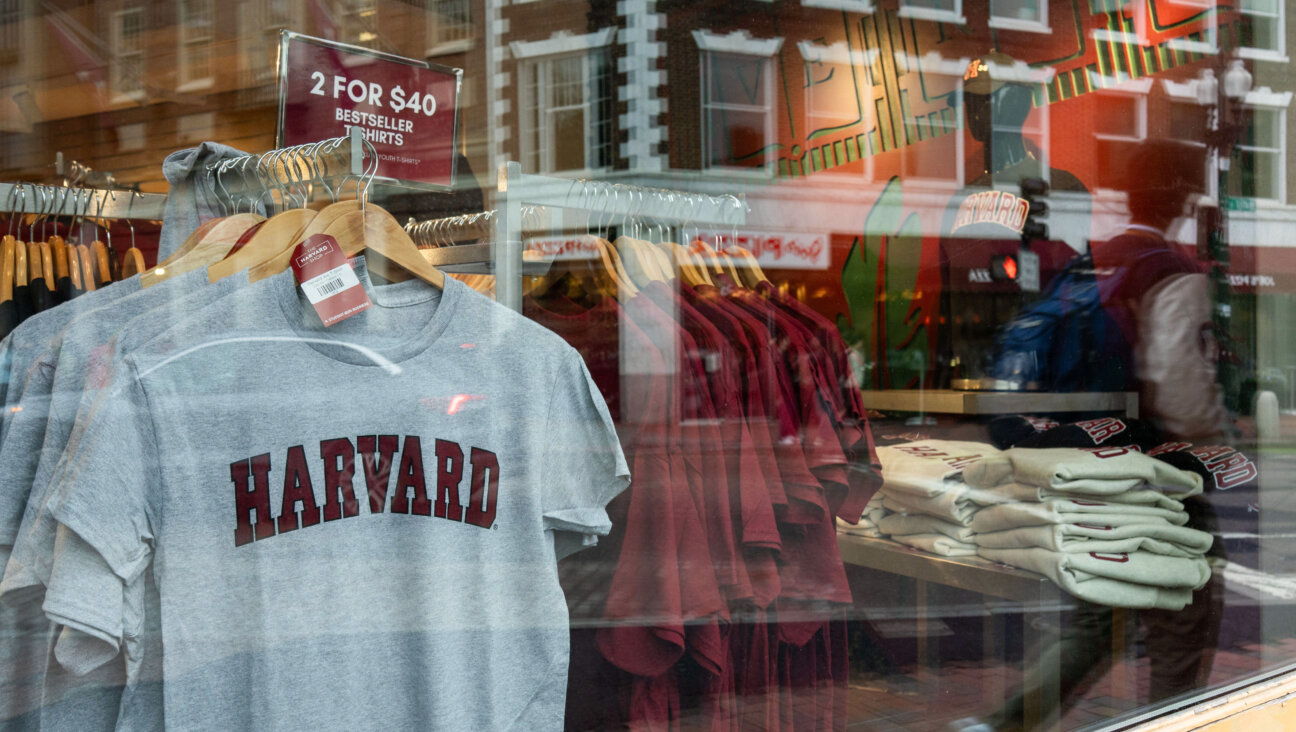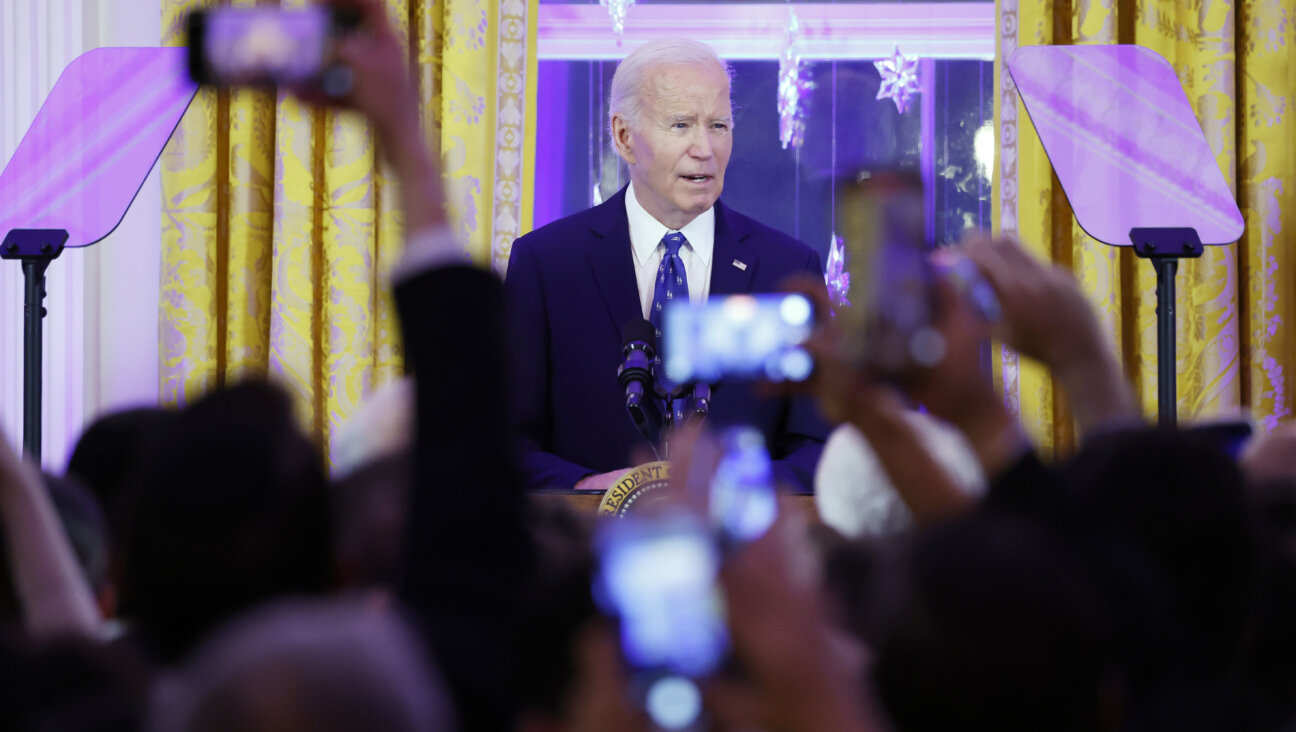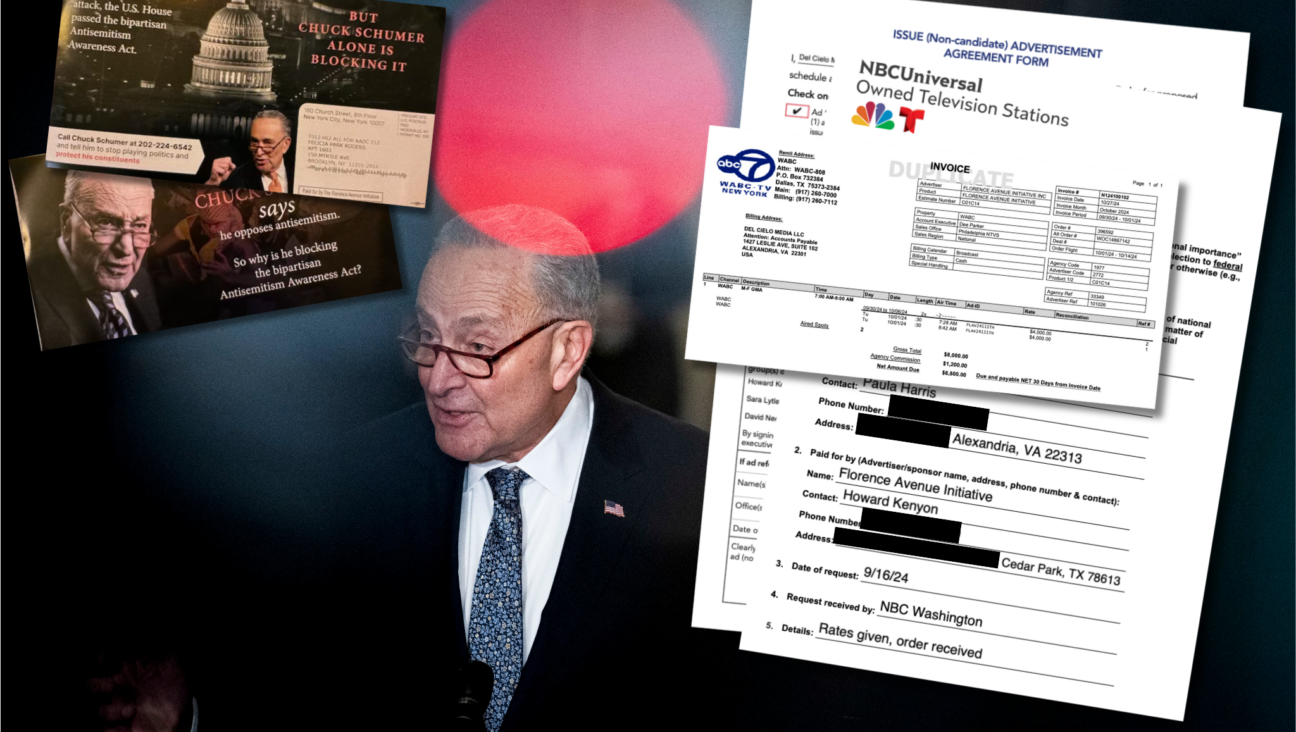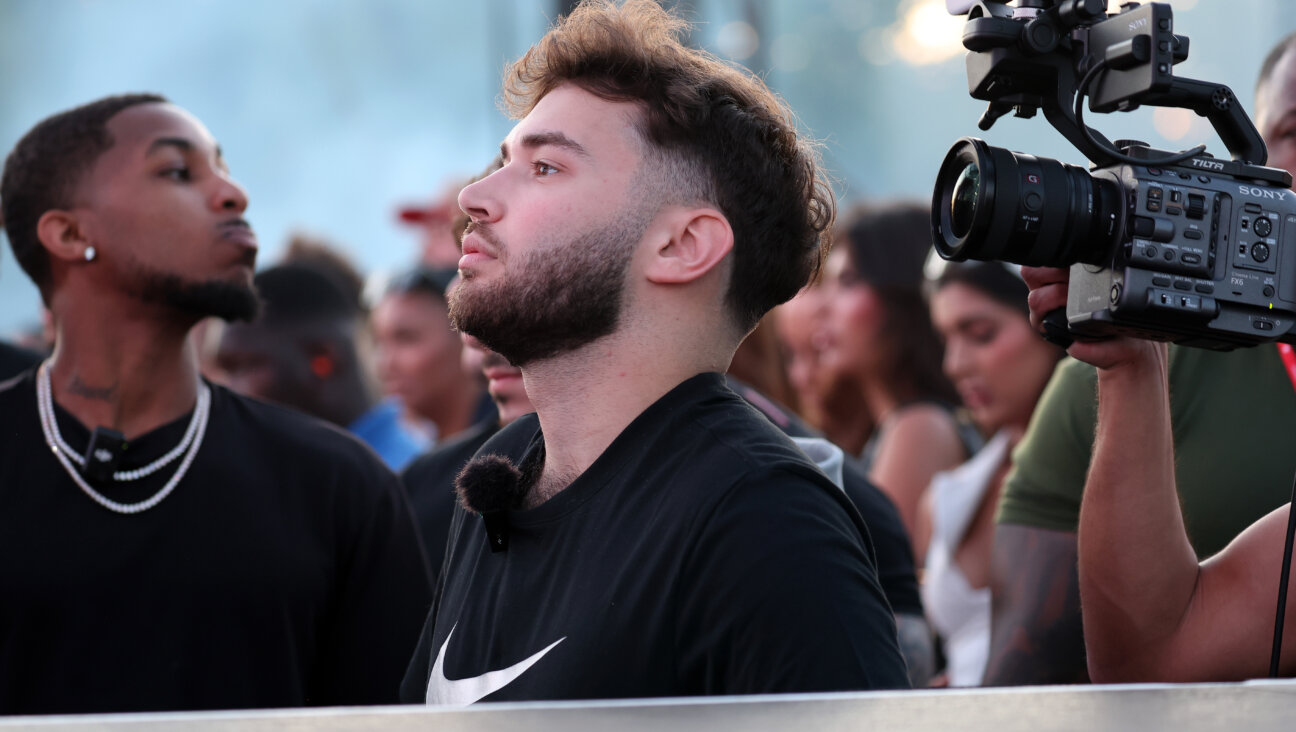Six categories of Jewish students fill in the ‘missing middle’ pieces of campus antisemitism puzzle
A new Brandeis study identifies a missing middle of Jewish students who have been overlooked
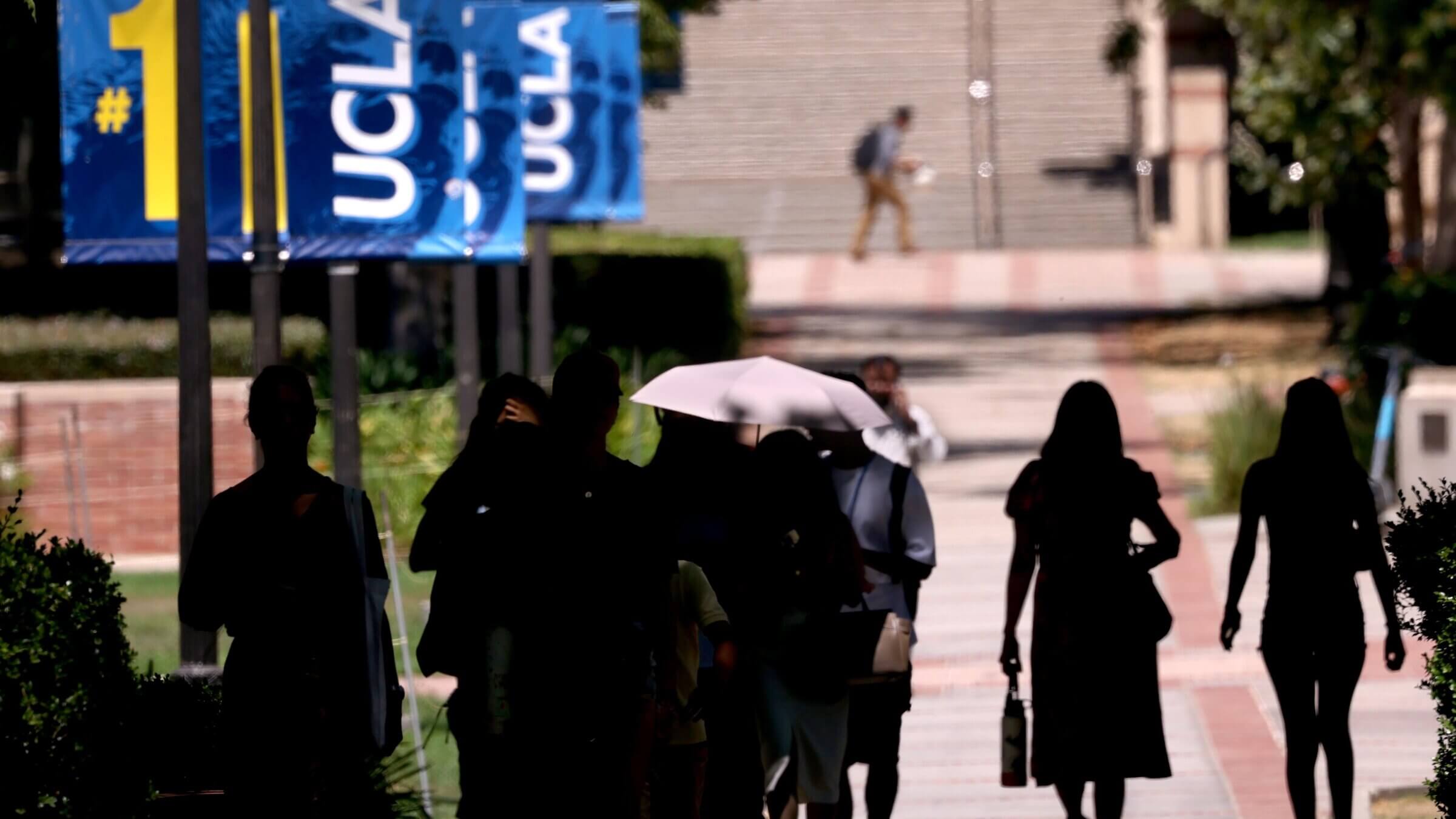
Students and visitors make their way on the UCLA campus in August. Photo by Getty Images
Antisemitism Decoded is the Forward’s biweekly newsletter that helps you separate the signal from the noise and understand current debates over Jewish safety. Sign-up here.
People steeped in the campus turmoil since Oct. 7 understand that there are at least two categories of Jewish students: The majority, who hold some attachment to Israel and were disturbed by the protests against it, and the minority who have participated in those protests.
But where would you place Bella, a pseudonymous Jewish student, at a California university with a reputation for antisemitism? She’s proud to be Jewish but never had much connection to Israel. That made her feel guilty after Oct. 7. But learning more about the conflict left her hopeless. “Before, when I knew nothing, ignorance was kind of nice,” she said.
Her roommate started sharing offensive posts about Jews and Israel on social media after the war began, so Bella quietly arranged for new housing the following semester. Yet she couldn’t say whether anti-Zionism, and the protests more generally, were antisemitic.
Or Shira, a student in Wisconsin who grew up in an observant Conservative and Zionist home but grew disillusioned with Israel during a gap year program in the country where she met with Palestinians. “I’m not a Zionist because it doesn’t capture enough,” she said, despite still believing “in Jewish autonomy, in some way.”
Shira tried to go to an IfNotNow protest against the war, but was turned off by the signs and slogans and found herself sitting on the sidelines. She still attends Shabbat dinner at the Chabad on campus but walks away from the rabbi when he mentions support for Israel.
***
Shira and Bella are two of the 36 Jewish students profiled anonymously in a new paper from Brandeis University that sought to break through the most common binaries — pro-Israel and anti-Israel.
“There’s a vast number of people on college campuses that wouldn’t be comfortable with either of those labels,” said Jonathan Krasner, who produced the study. “We wanted to understand where those people were coming from.”
Krasner and his research team found six distinct categories of Jewish students they describe this way:
- The Affirmed: Students whose pro-Israel activism and connection to Jewish identity deepened after Oct. 7
- The Aggrieved: Activist students who felt betrayed by Jewish institutions
- The Retrenched: Students who retreated into private Jewish spaces for safety and support
- The Conflicted: Students grappling with the moral and political complexities of the Israeli-Palestinian conflict
- The Disillusioned: Students let down by Jewish and Israeli institutions, fostering skepticism and distrust but not action
- The Disengaged: Students who distanced themselves from both Jewish and campus political discourse, often due to a desire to avoid conflict
Mapped onto a very rough political spectrum, these categories might look something like this.
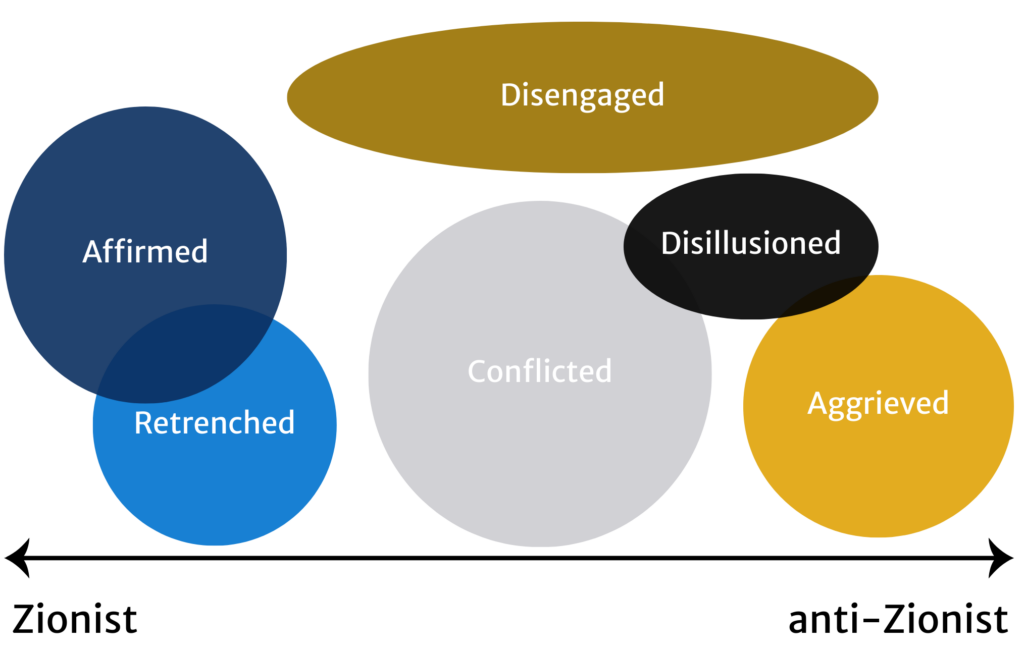
We probably hear the most from “affirmed” students, with many — Shabbos Kestenbaum, Eyal Yakoby and Eden Yadegar — becoming national spokespeople for embattled Jews on campus, especially those who fall into the “retrenched” category.
The “aggrieved,” often represented by members of Jewish Voice for Peace, have also received a platform. But there’s a great missing middle in the discourse created by the absence, in the Brandeis study’s terms, of the “disillusioned,” “conflicted” and “disengaged.”
***
The category of Jewish students most concerned about antisemitism was, notably, not the “affirmed” — vocal pro-Israel students who are often the most direct targets for harassment by campus protesters — but rather the “retrenched,” who observed anti-Zionism with alarm but desperately sought to avoid conflict and turned toward Jewish spaces on campus.
Keren, who grew up in an affluent Jewish neighborhood on the East Coast, stopped wearing her Star of David necklace, hid other Jewish jewelry even from her roommate and avoided talking about the war in Gaza with other students.
“I don’t want to risk my relationships,” she explained.
But, at the same time, she said: “I’m pretty sure that most people I interact with hold antisemitic views.”
***
That missing middle of Jewish students that we tend to hear the least about — the “conflicted,” “disengaged” and “disillusioned” — could represent half of all Jews on campus, and they need support too.
You can see their voices reflected in documents like the Harvard task force report I wrote about in the last edition of this newsletter, and my bet is that they see little benefit from the most aggressive approaches to tamping down campus activism that may appeal to the “retrenched” and “affirmed.”
Instead, it may be the softer recommendations for improving the campus climate — like recruiting students interested in “open inquiry and mutual respect,” as the Harvard report suggested — that may help reduce polarization, and make the students who have stayed away from Jewish institutions at their schools and avoided conversations about Israel feel more comfortable participating.
📚 GO DEEPER
- Between Home and Homeland: Jewish College Students Confront the Israel-Gaza Conflict and Campus Divides (Journal of Jewish Education)
- A Venn diagram to help us talk about Israel and antisemitism (Forward)
